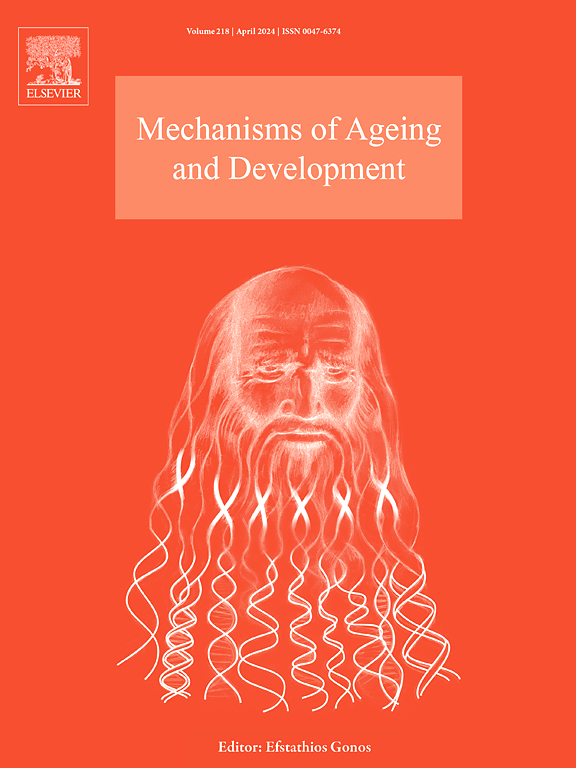从基于衰老的临床前模型和人类加速衰老范式深入了解与年龄相关的骨质疏松症。
IF 5.1
3区 医学
Q2 CELL BIOLOGY
引用次数: 0
摘要
年龄相关性骨质疏松症的临床前模型已经建立在衰老细胞积累和清除的基础上。前者包括基于端粒功能障碍和局灶辐射的动物模型;后者基于衰老细胞的遗传和药理学靶向(即去除)。使用这些模型的证据表明,细胞衰老在衰老性骨质流失的病理生理学中起着关键作用,衰老相关分泌表型(SASP)介导局部和全身骨骼的有害影响。线粒体功能障碍也与衰老和年龄相关的合并症有关,包括骨质疏松症,小鼠mtDNA聚合酶γ (Polg)基因的敲入突变可能在老年骨质疏松症患者中重现类似的呼吸链复合物缺陷。这和其他对老年性骨质疏松症的贡献也可以通过对人类加速衰老的非遗传范式的仔细评估来确定。早衰综合征,尤其是骨质流失表型突出的早衰综合征,包括骨骼卸载、卵巢早衰和儿童癌症存活等临床症状。这些非遗传性类早老性综合征涉及谱系转换到脂肪形成命运,抑制Wnt信号,增加破骨细胞生成和破骨细胞激活频率,以及衰老细胞积累的实质性负担。本文章由计算机程序翻译,如有差异,请以英文原文为准。
Insights into age-related osteoporosis from senescence-based preclinical models and human accelerated aging paradigms
Preclinical models of age-related osteoporosis have been developed based on the accumulation and clearance of senescent cells. The former include animal models based on telomere dysfunction and focal radiation; the latter based on genetic and pharmacological targeting (i.e., removal) of senescent cells. The weight of evidence using these models suggests that cellular senescence plays a key role in the pathophysiology of aging-onset bone loss with the senescence-associated secretory phenotype (SASP) mediating local and systemic deleterious effects on the skeleton. Mitochondrial dysfunction has also been implicated in senescence and age-related comorbidities, including osteoporosis, and knock-in mutations in the mtDNA polymerase gamma (Polg) gene in mice may recapitulate similar respiratory chain complex defects in aged individual with osteoporosis. This and other contributions to senile osteoporosis may also be identified by the careful evaluation of non-genetic paradigms of human accelerated aging. Premature aging syndromes, especially those with a prominent bone loss phenotype, include clinical scenarios of skeletal unloading, premature ovarian failure and survival from childhood cancers. These non-hereditary progeroid syndromes implicate the involvement of lineage switching to an adipogenic fate, inhibition of Wnt signaling, increased osteoclastogenesis and activation frequency of osteoclasts, as well as the substantial burden of senescent cell accumulation.
求助全文
通过发布文献求助,成功后即可免费获取论文全文。
去求助
来源期刊
CiteScore
11.10
自引率
1.90%
发文量
79
审稿时长
32 days
期刊介绍:
Mechanisms of Ageing and Development is a multidisciplinary journal aimed at revealing the molecular, biochemical and biological mechanisms that underlie the processes of aging and development in various species as well as of age-associated diseases. Emphasis is placed on investigations that delineate the contribution of macromolecular damage and cytotoxicity, genetic programs, epigenetics and genetic instability, mitochondrial function, alterations of metabolism and innovative anti-aging approaches. For all of the mentioned studies it is necessary to address the underlying mechanisms.
Mechanisms of Ageing and Development publishes original research, review and mini-review articles. The journal also publishes Special Issues that focus on emerging research areas. Special issues may include all types of articles following peered review. Proposals should be sent directly to the Editor-in-Chief.

 求助内容:
求助内容: 应助结果提醒方式:
应助结果提醒方式:


